Gardening for Wildlife

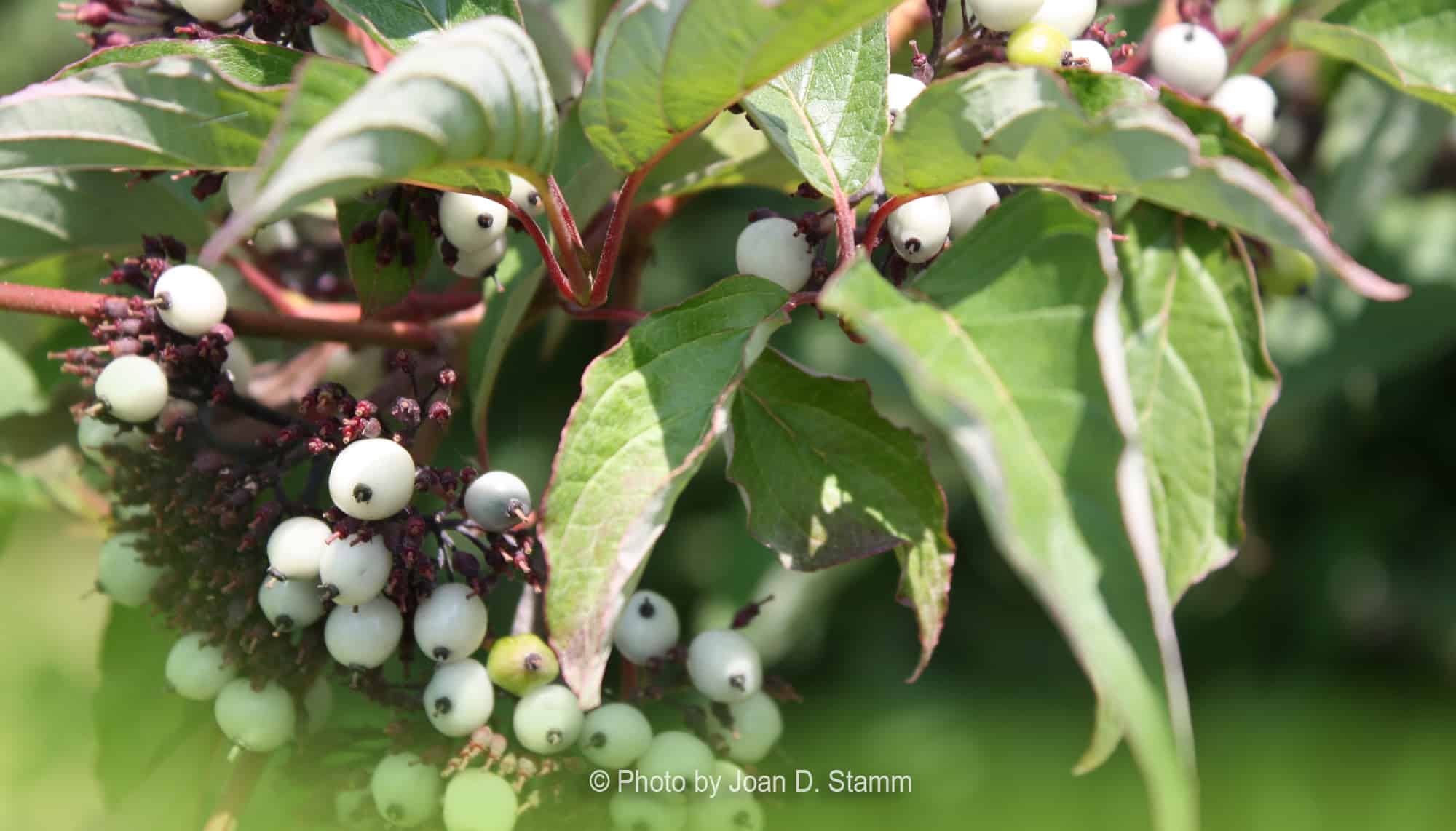
Gardening for Wildlife
Thinking of adding new plants to your garden this spring? Choose from these recommendations to build a healthy ecosystem for your favorite wildlife species.
By: Joan D. Stamm, Skagit County WSU Extension Master Gardener
In a blog article last September, I recommended reading Nature’s Best Hope by Douglas Tallamy for the “why” of gardening for wildlife. This article will explore the “what” and the “where”—as in “what” plants and “where” to buy them.
For the “what,” I suggest Real Gardens Grow Natives by Eileen M. Stark as a guide to site prep, plant selection, and the benefits each plant offers the ecosystem. “Benefit” in this article, as in Stark’s book, is the critical word. It points to what the National Wildlife Federation (NWF) has coined as keystone plants.
What exactly is a keystone plant?
According to NWF, keystone plants are “native plants critical to the food web and necessary for many wildlife species to complete their life cycle. Without keystone plants in the landscape, butterflies, native bees, and birds will not thrive. 96% of our terrestrial birds rely on insects supported by keystone plants.”
Stark, a wildlife conservationist and landscape designer from Portland, Oregon, specializes in wildlife habitat gardens that include keystone plants. In the 317 pages of her beautifully photographed book, you will find 100 of her favorite Northwest native plant varieties and their many benefits for wildlife.
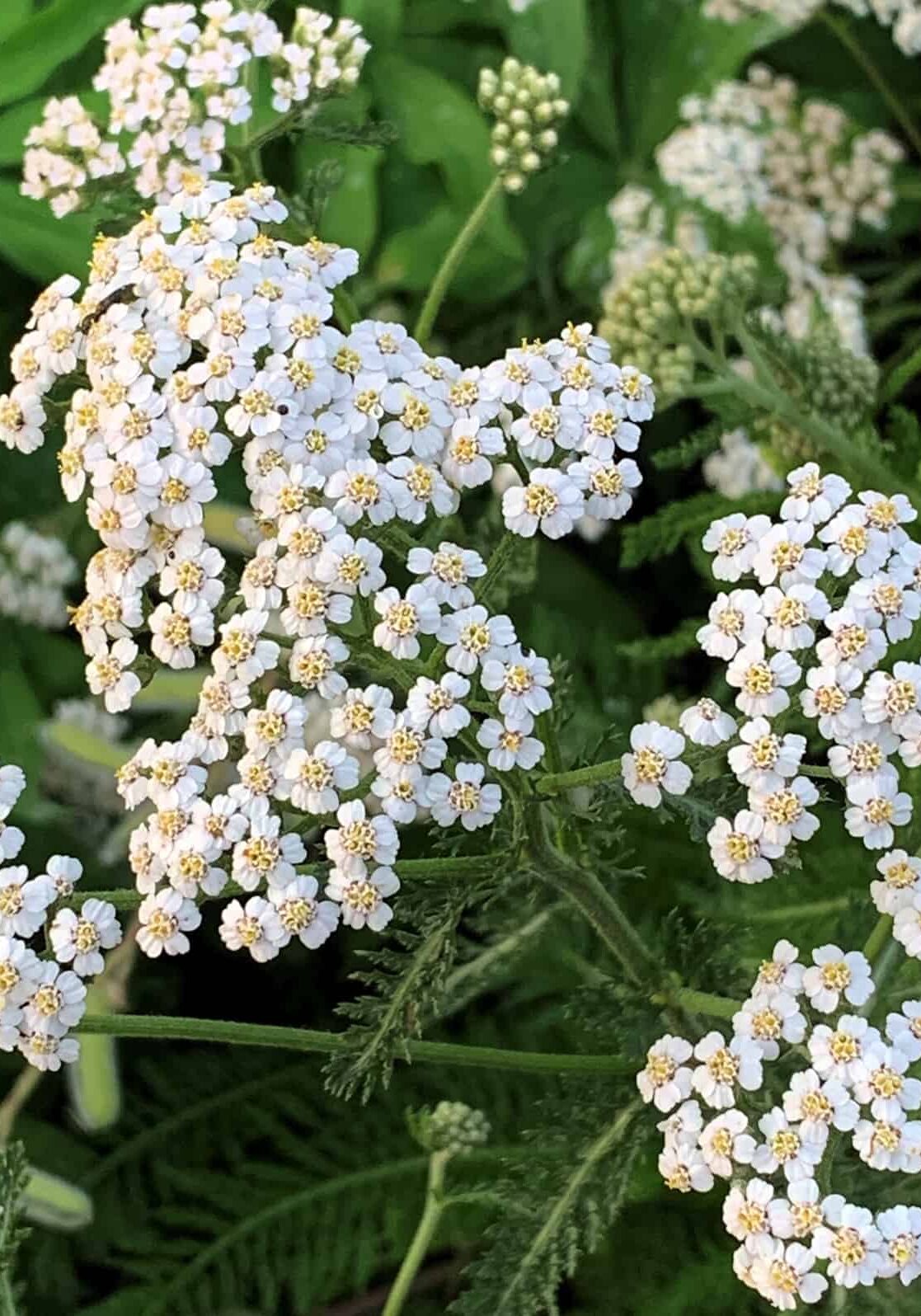
Yarrow (Achillea millefolium) © Joan D. Stamm
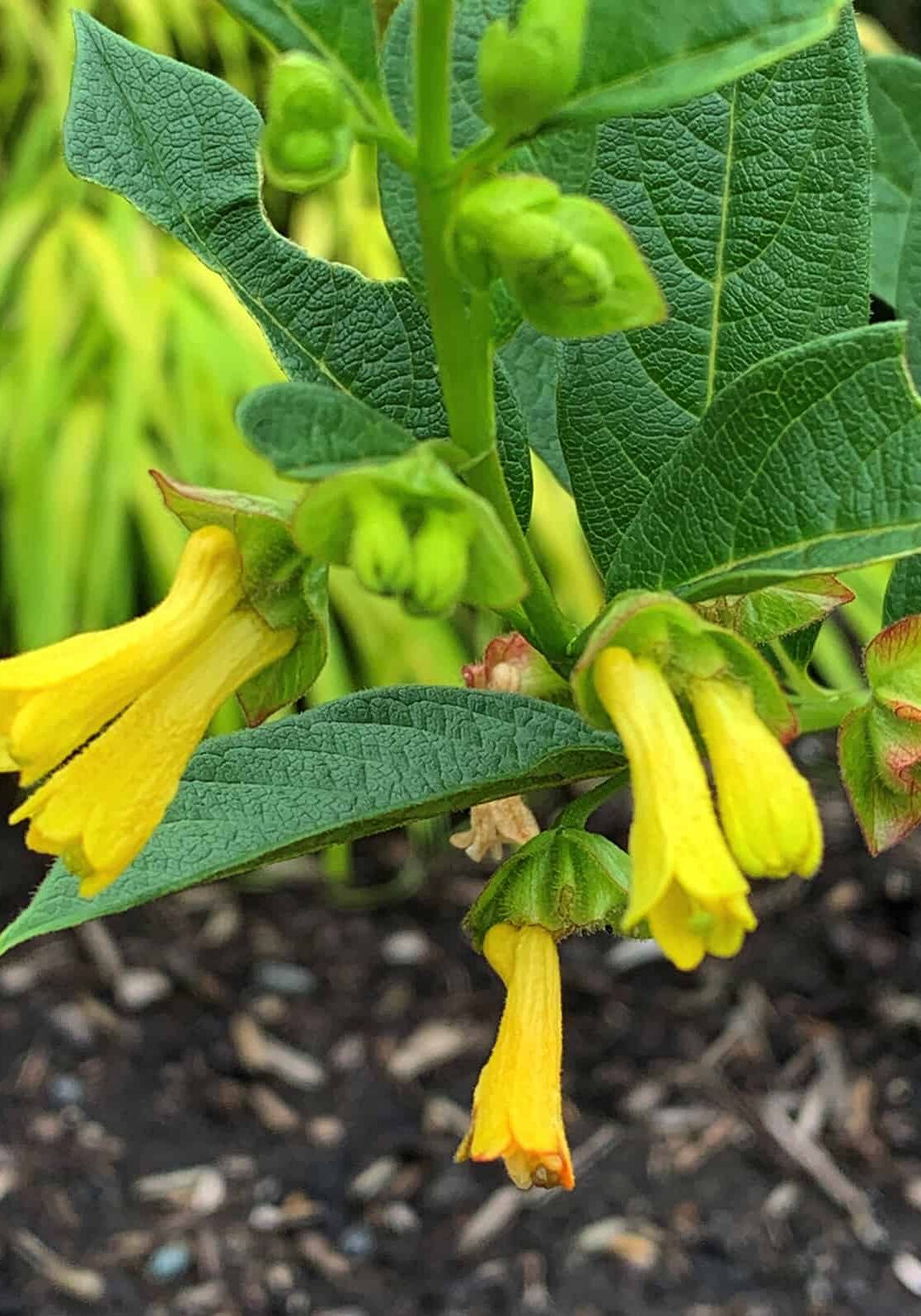
Twinberry (Lonicera involucrata) © Joan D. Stamm
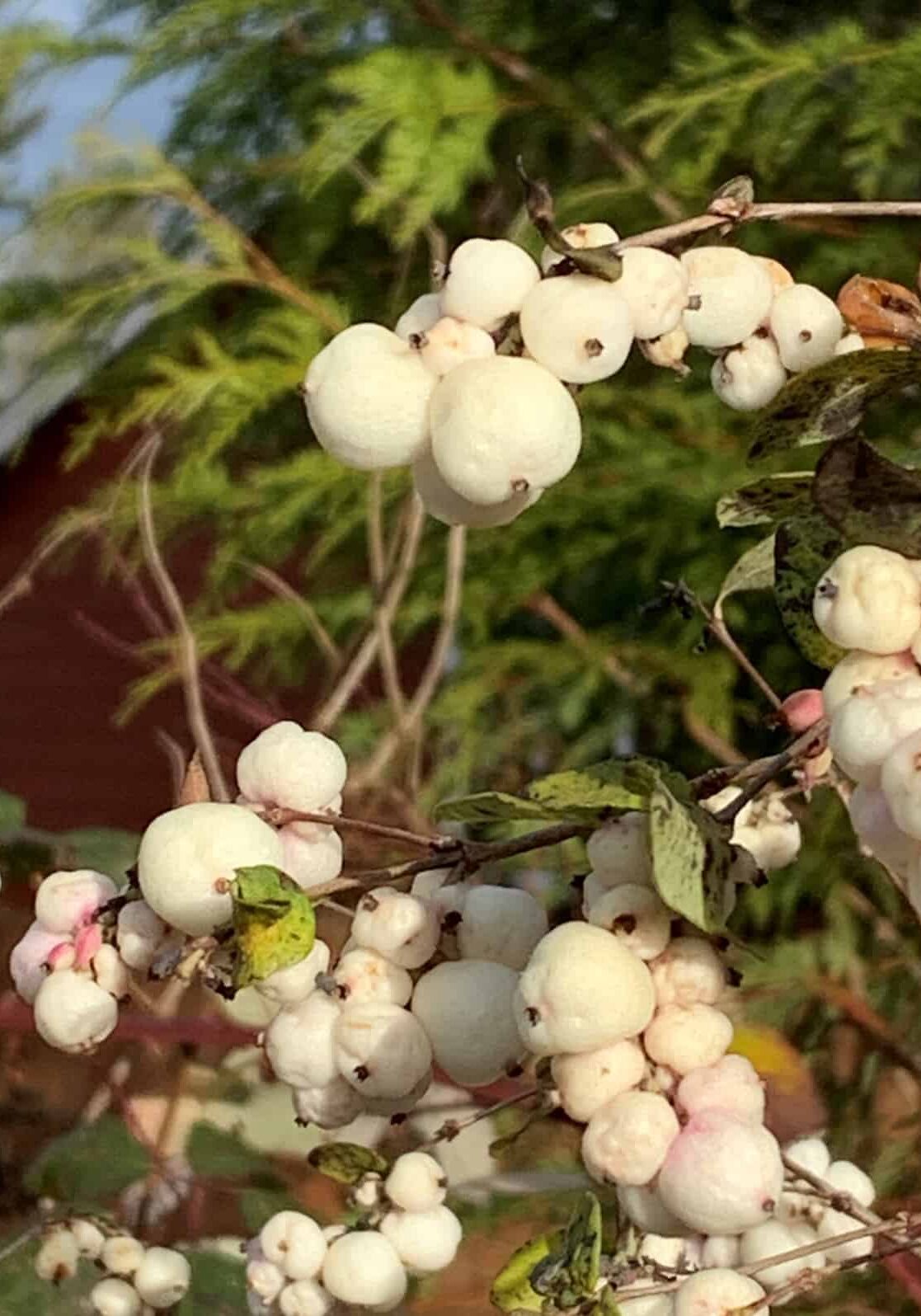
Snowberry (Symphoricarpos albus) © Joan D. Stamm
For example, the Garry oak or Oregon white oak (Quercus garryana) is one of the top keystone plants Stark promotes in her book. If we want butterflies in our garden, we need to have trees, shrubs, and perennials that host butterfly larvae. The Garry oak is one such tree; it is a host plant for many caterpillars, including the “gray hairstreak, California sister, and Propertius duskywing butterfly larvae.” In addition, the “flowers attract native bees,” and the “acorns sustain populations of mammals and birds such as woodpeckers, nuthatches and vireos.” “Studies show,” writes Start, “that oaks support more insect herbivores than any other plant genus.”
Although incredibly beneficial, not everyone has space for an 80-foot Garry oak. If not, consider another keystone tree: bitter cherry (Prunus emarginata). Birds such as “tanagers, waxwings, bluebirds, towhees, and flickers” will arrive to eat the fruit. A native cherry also hosts “swallowtail and Lorquin’s admiral butterfly larvae.”
If you love butterflies, another great keystone tree is Scouler’s willow (Salix scouleriana); it hosts “western tiger swallowtail, great comma, dreamy duskywing, and mourning cloak butterfly larvae.” In addition, native willow flowers “provide pollen and nectar for bees,” and “small and large mammals feed on buds, leaves, and seeds.”
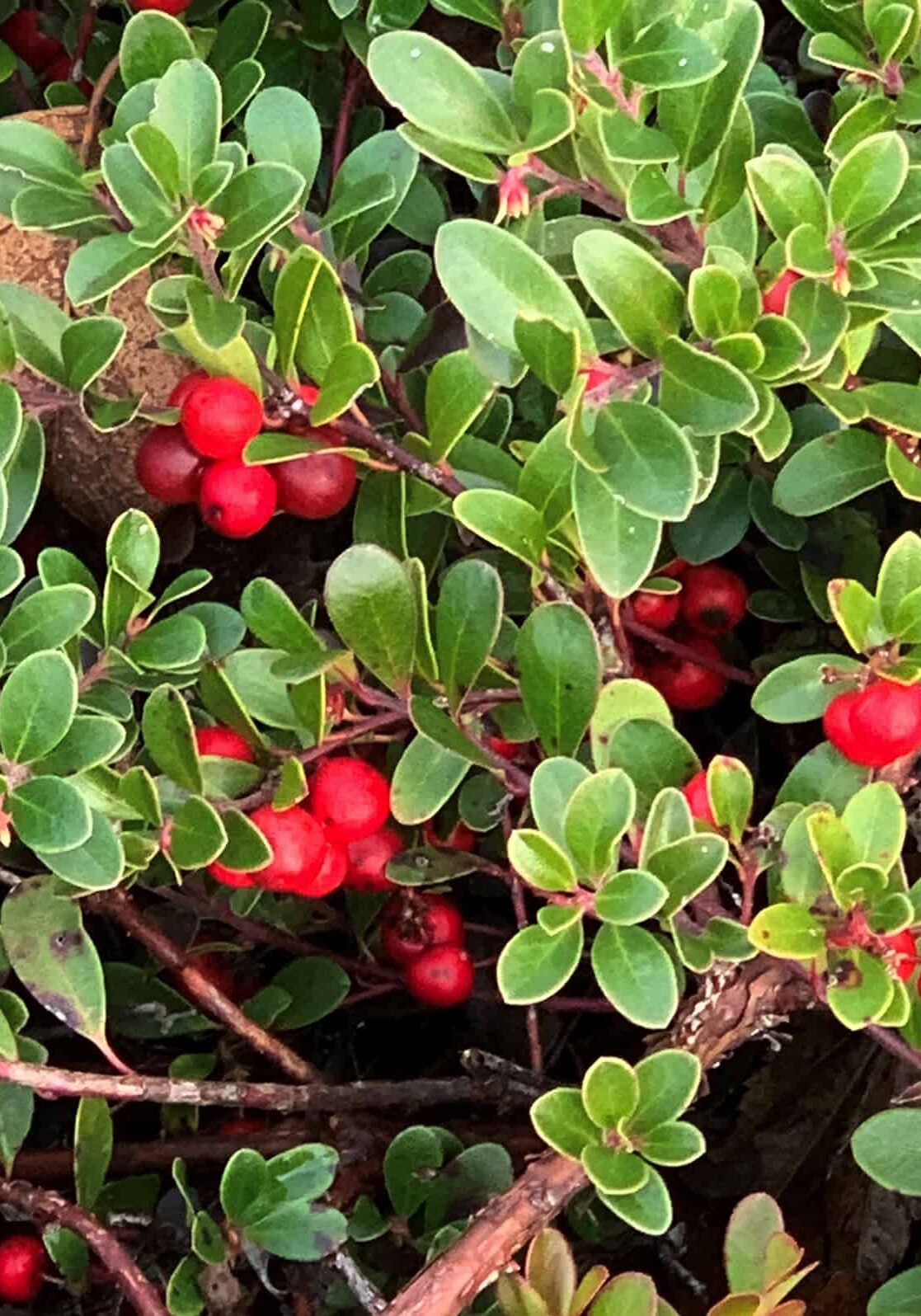
Kinnikinnick (Arctostaphylos uva-ursi) © Joan D. Stamm
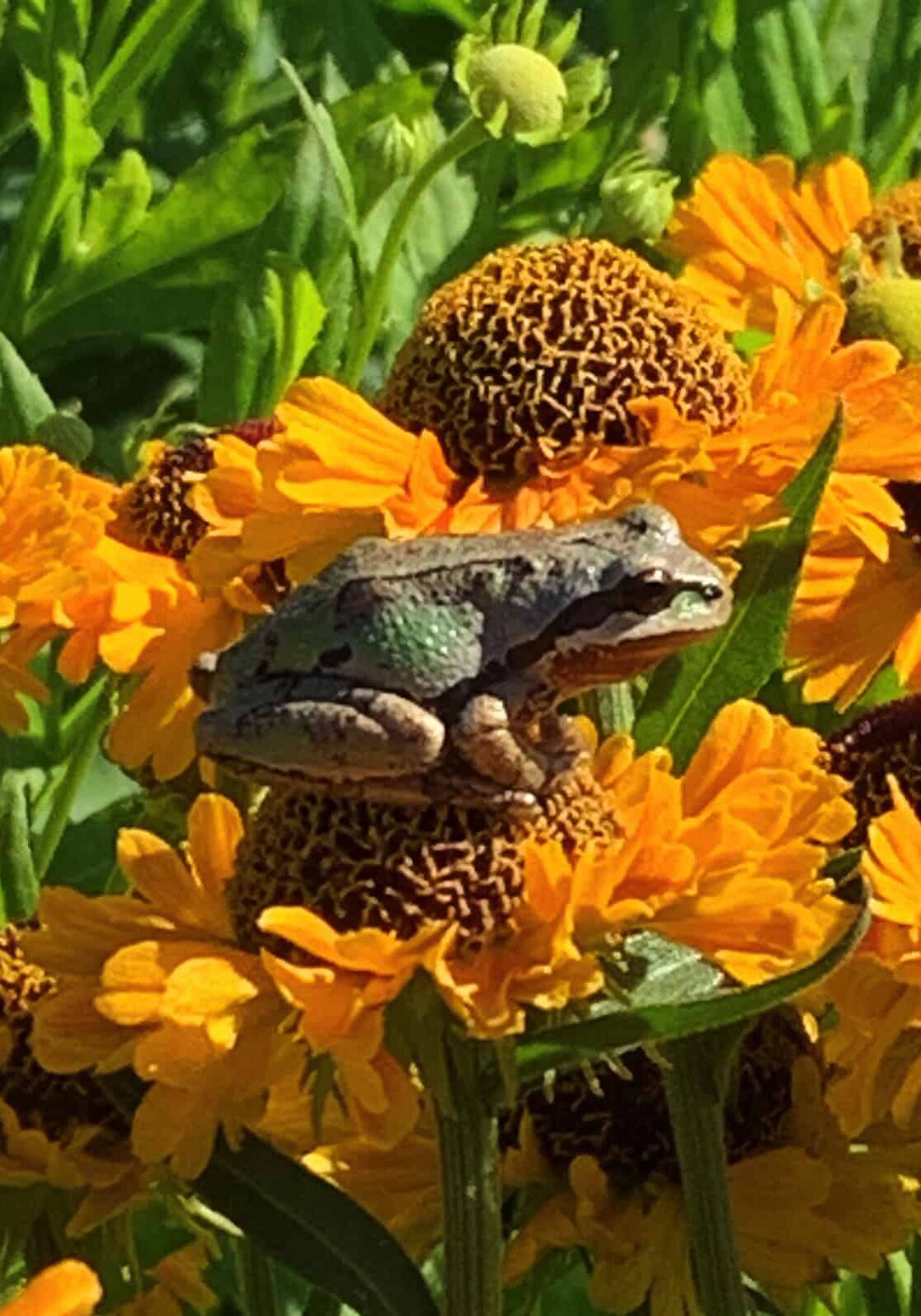
Frog on Sneezeweed © Joan D. Stamm
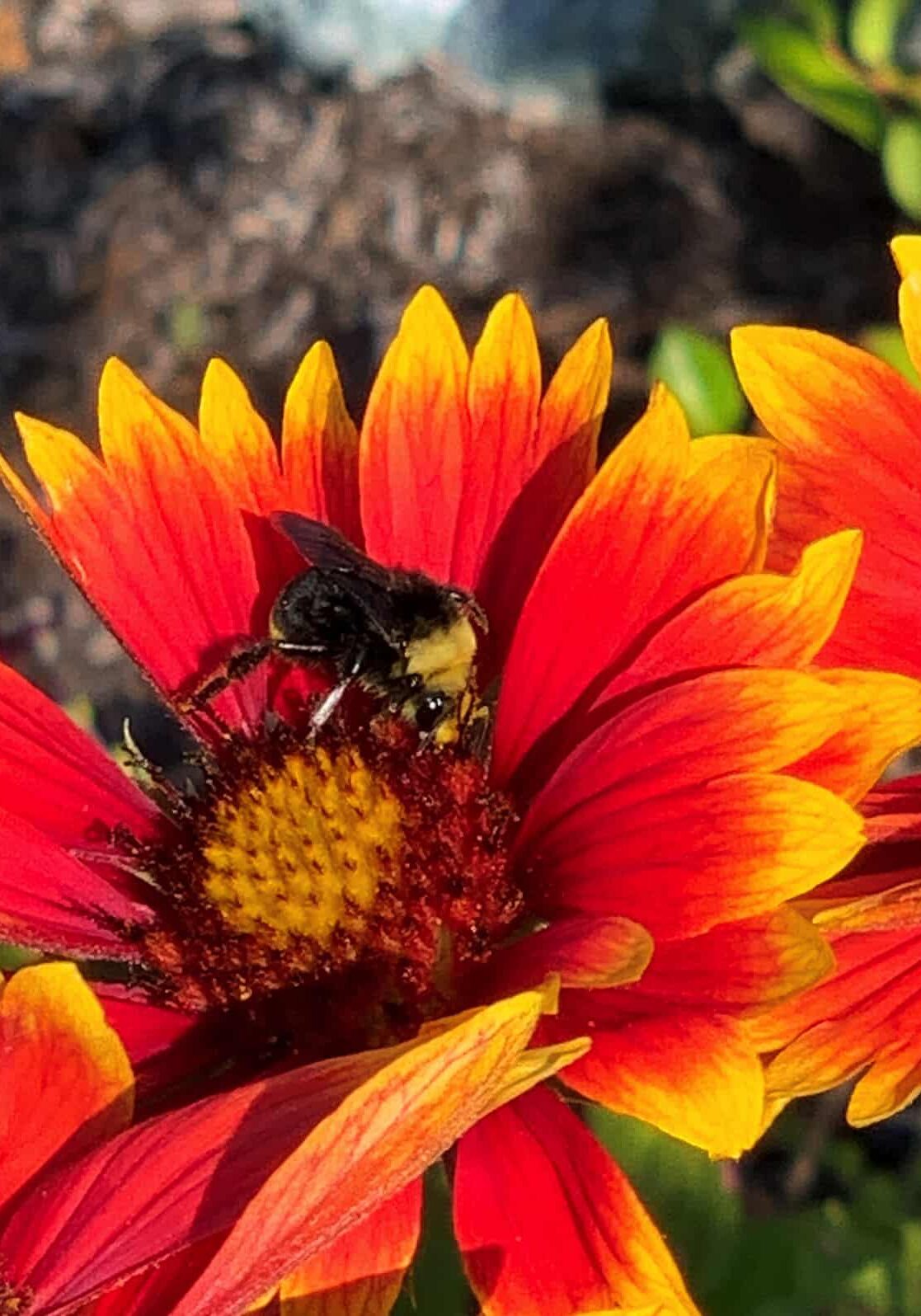
Bumblebee on blanket flower © Joan D. Stamm
Serviceberry (Amelanchier alnifolia) is also a keystone tree, providing “pollen and nectar for large numbers of bees, as well as hummingbird and spring azure butterflies.” Serviceberry fruit, says Stark, “is relished by waxwings, chickadees, woodpeckers, and tanagers,” and it is a host plant for “pale swallowtail, brown elfin, Lorquin’s admiral, and California hairstreak butterfly larvae.”
Along with these important native trees, many keystone perennials can fit into any open sunny space in your garden. A beneficial plant throughout many regions, goldenrod (Solidago canadensis), is a “nectar source for native bees and butterflies, such as the checkered skipper, clouded sulphur, gray hairstreak, monarch [east of the Cascades], and the endangered Oregon silverspot.”
Douglas aster (Symphyotrichum subspicatum) “provides nectar and pollen for bees and nectar for woodland skipper, pine white, painted lady, red admiral, mourning cloak, and the Oregon silverspot.” It is also a “host plant for field crescent and other butterfly larvae.”
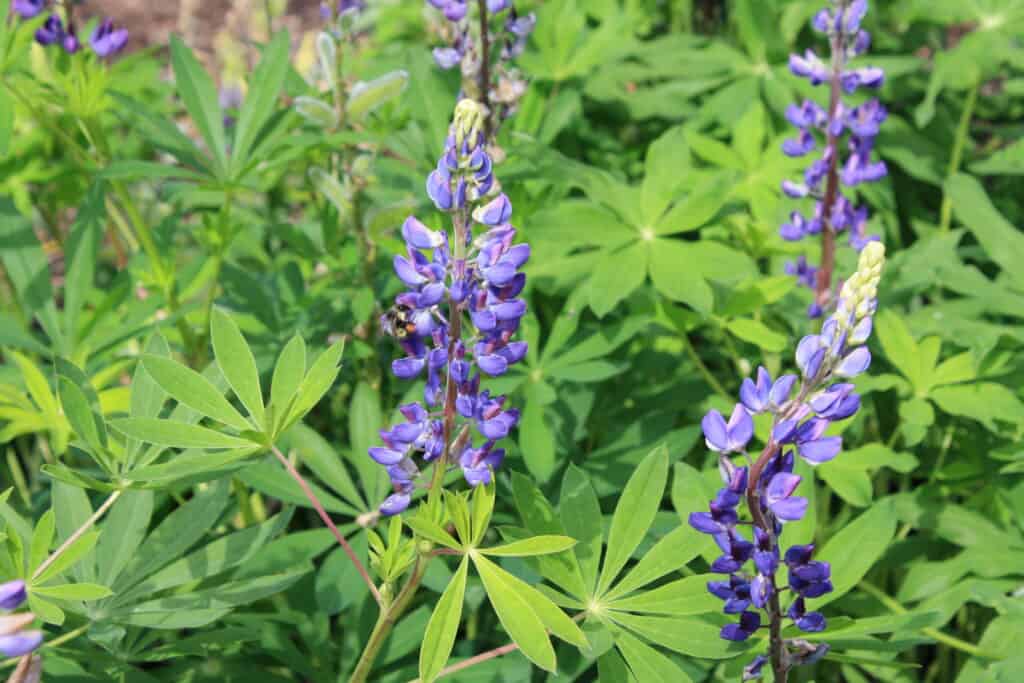
Big-leaf lupine (Lupinus polyphyllus) not only “provide[s] pollen for native bumblebees,” it is a “host plant for silvery blue, painted lady, and orange sulfur butterfly larvae. Aphids attracted to the plant are preyed upon by syrphid fly larvae. Seeds are eaten by birds such as sparrows and finches.”
Another dynamic host plant, yet sadly endangered in Washington, Viola adunca, our native violet, is a host plant for at least seven species of butterfly caterpillars and an enticing nectar plant for the Mardon skipper butterfly.
Stark divides her native plant selections into three categories: plants for sun, partial sun, and mostly shade, guiding us in our creed “right plant, right place.” You’ll also find chapters on soil, pruning, watering, weeding, mulching, and much more. Her book is this gardener’s “go-to” choice whenever looking for the right native plant for a particular area and wanting to know the benefit to nature: what bees, butterflies, birds, or caterpillars the plant will attract.
As beneficial as all native plants are for our native wildlife, some natives on Stark’s list may not be suitable for an urban or suburban garden. For example, western red cedar, grand fir, Douglas fir, western hemlock, and Sitka spruce, are all enormously beneficial, but grow to a height of over 100 feet. The Douglas’ spirea, Stark warns, “may be too assertive for small, moist gardens.” Yet, the Spiraea betulifolia var. lucida, a small shrub with white flowers, might be perfect for a sunny border. Be sure to familiarize yourself with height, width, water requirements, and characteristics such as “vigorous,” “assertive,” or “rapid spreader” to determine if you have the “right plant for the right place.” A Nootka rose’s flowers and hips provide many benefits to wildlife but, over time, will grow into a thicket. However, if you have room for it to spread, it might make the perfect hedgerow, providing not only winter food for juncos and grosbeaks but also a habitat for nesting birds and the western checkerspot butterfly caterpillar.
For a more comprehensive book on creating gardens for wildlife, see Russell Link’s Landscaping for Wildlife in the Pacific Northwest. Link’s book not only includes extensive lists of native and non-native plants that benefit wildlife but also illustrates how to build habitats for birds, reptiles, mammals, and all the other creatures that make up a complete ecosystem. For example, he details snag locations and which draw native birds. He describes how to create a cavity in a live tree without killing the tree and thus create a habitat for a woodpecker. The book contains several kinds of fully illustrated brush or rock piles, including how to make them, where to place them, and who will benefit.
For example, Link says that “bushtits, chickadees, dark-eyed juncos, towhees,” and others “will use the inside of a brush pile,” whereas “hummingbirds, robins, and towhees will use the outside of a brush pile. Salamanders, snakes, toads, and turtles,” will use the base of the brush pile. He also covers how to create or construct proper birdbaths, ponds, nest boxes, and bat houses and features detailed drawings to illustrate how to build homes for Mason and bumblebees. Included are eight pages of colored photos depicting NW native mammals, birds, reptiles, amphibians, butterflies, moths, and other insects, describing our native birds and their preferred habitats.
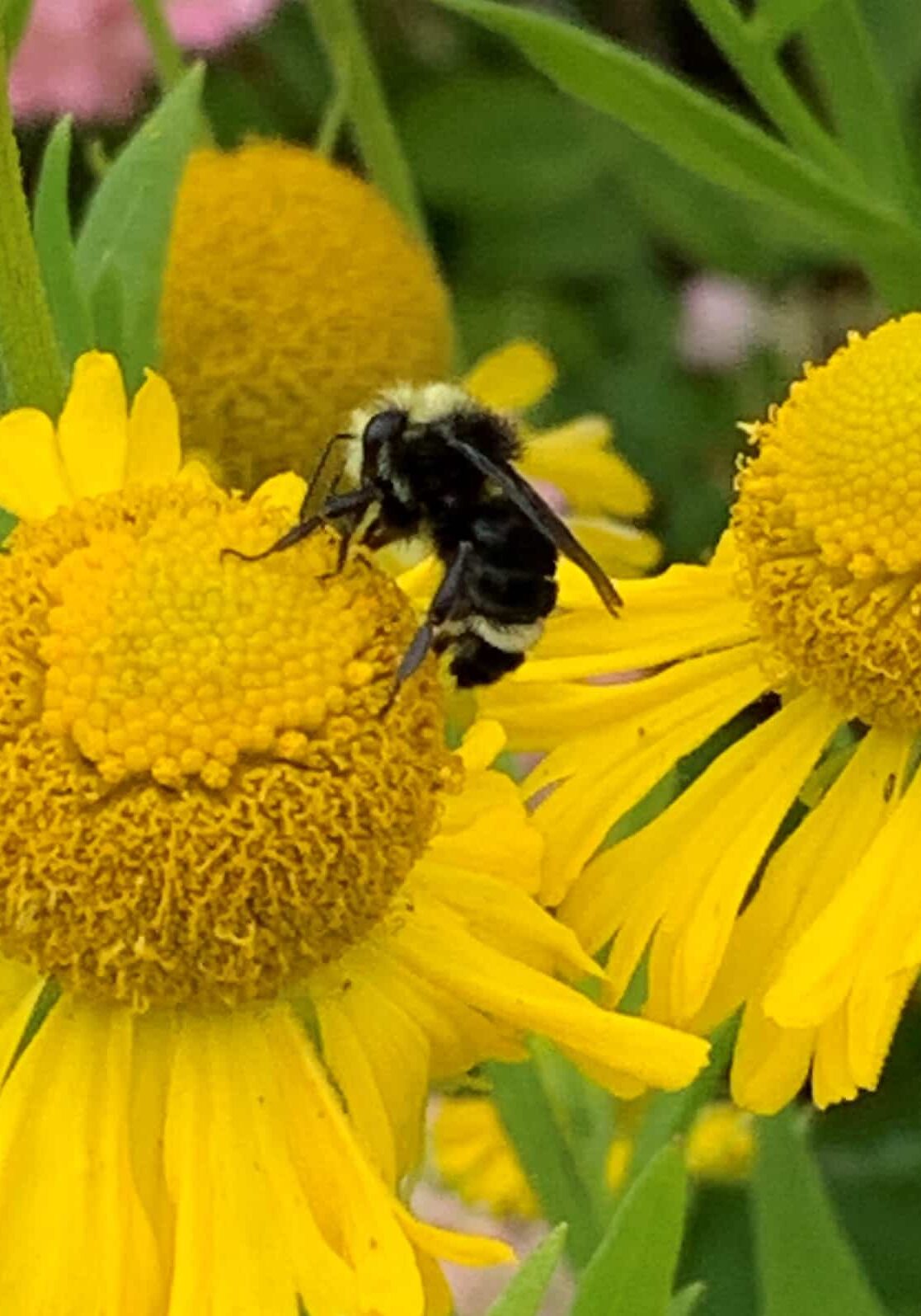
Bee on Sneezeweed © Joan D. Stamm
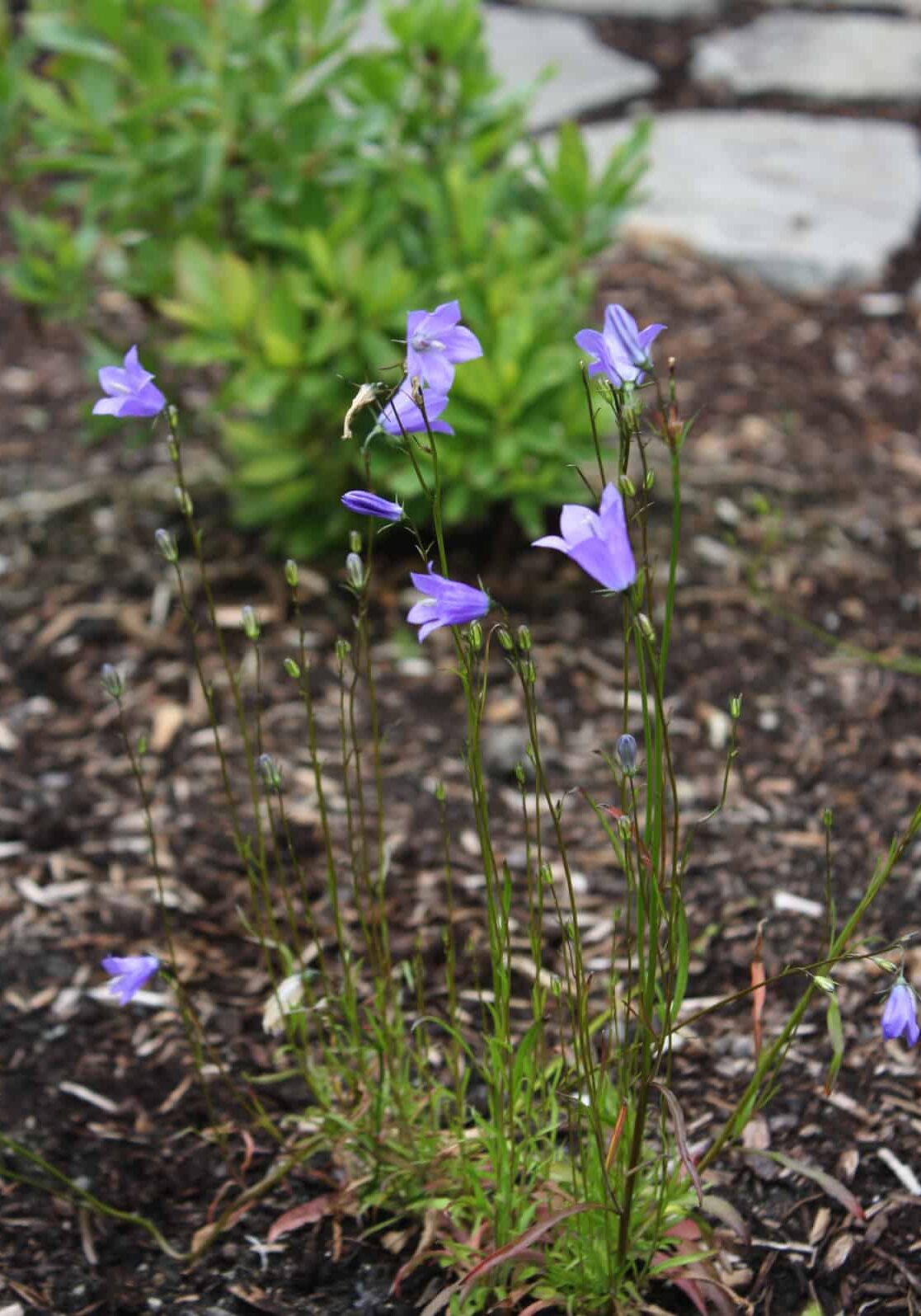
Scotch bluebell (Campanula rotundifolia) © Joan D. Stamm
With these three books, Nature’s Best Hope, Real Gardens Grow Natives, and Landscaping for Wildlife in the Pacific Northwest, you will be inspired, informed, and guided to provide plants that offer habitat and food (nectar, pollen, insects) for our native wildlife. You will better understand why it’s important to cultivate natives and have a clearer idea of what to plant, thus joining the movement to restore our natural ecosystem.
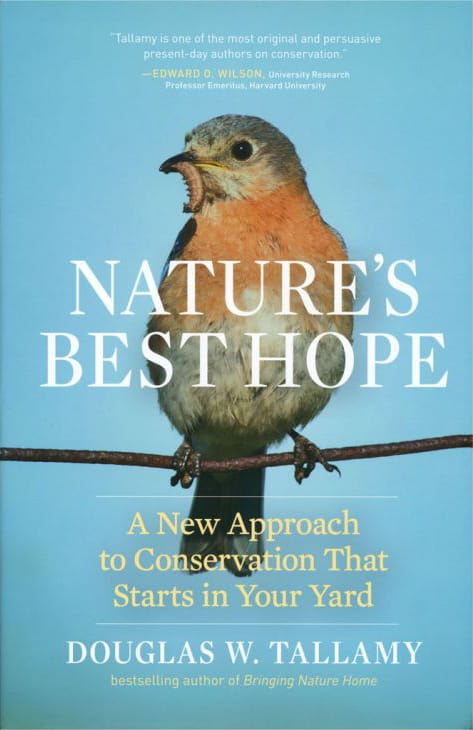
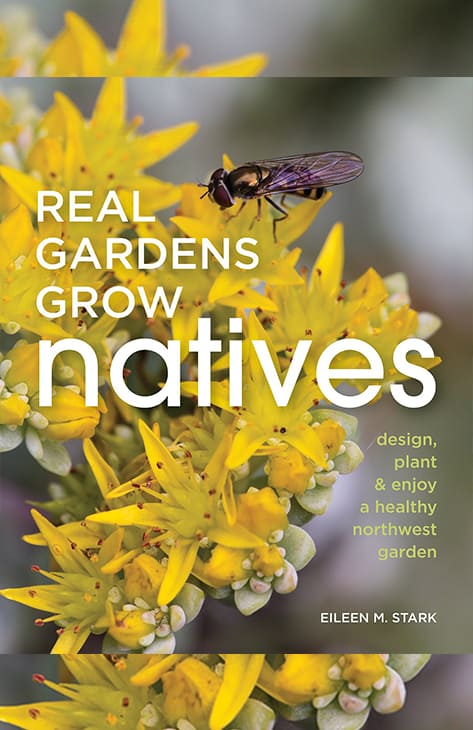
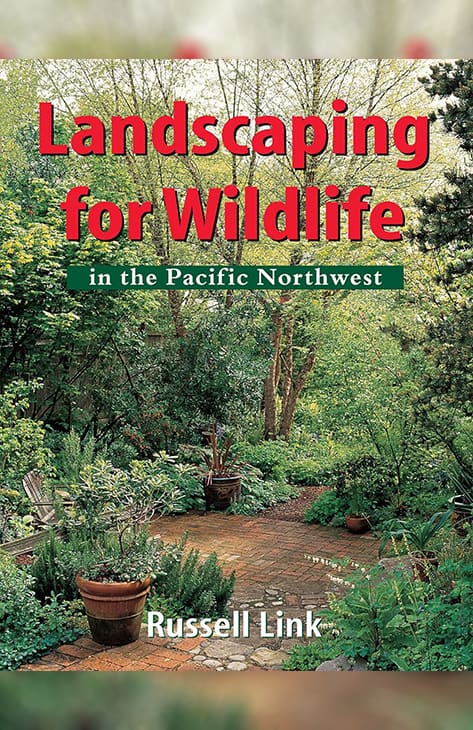
The only question remaining is “where” to buy all these wonderful beneficial plants?
You can start with our very own Skagit County Master Gardener Foundation’s Annual Plant Fair, which always features a native plant section. The sale occurs the Saturday before Mother’s Day (May 11, 2024) at the Skagit County Fairgrounds in Mount Vernon.
The local Salal chapter of the Washington Native Plant Society (https://www.wnps.org/salal-programs/garden) offers a twice-yearly native plant sale online with pick up at their demonstration garden adjacent to the Discovery Garden. Sign up to get email notifications.
Some of our local nurseries are beginning to carry more native plants. Azusa Gardens in Mount Vernon on Hwy 20 (https://www.azusagardens.com/) keeps expanding its native plant section each season. They feature two- and five-gallon shrubs such as twinberry, ocean spray, snowberry, red-twig dogwood, mountain hemlock, and others. Twinberry (Lonicera involucrata), in particular, is an attractive and beneficial native shrub easily grown with a little shade. It produces yellow tubular flowers attractive to hummingbirds and the berries are eaten by “thrushes, flickers, grosbeaks, and waxwings”; it’s also a host plant for the “snowberry checkerspot butterfly larvae.” Azusa also carries native ferns, and groundcovers such as bunchberry and wild ginger. They also welcome requests for specific plants.
REFERENCES AND RESOURCES:
Link, R. 1999. Landscaping for Wildlife in the Pacific Northwest. Washington Department of Fish and Wildlife.
Stark, E. 2014. Real Gardens Grow Natives. Skipstone, Seattle, WA
Tallamy, D. 2019. Nature’s Best Hope: A New Approach to Conservation That Starts in Your Yard. Timber Press, Portland, OR.
ABOUT THE AUTHOR :

Joan D. Stamm is a Skagit County WSU Extension Master Gardener and the author of several books, including The Language of Flowers in the Time of COVID: Finding Solace in Zen, Nature and Ikebana.
Questions about home gardening or becoming a Master Gardener may be directed to: Skagit County WSU Extension Office, 11768 Westar Lane, Suite A, Burlington, WA 98233; by phone: 360-428-4270; or via the website: www.skagit.wsu.edu/mg
Great article, Joan! Love your photos and all of the inspiring ideas for wildlife attraction.
Joan, I enjoyed reading this lovely article. Beautiful photos with lots of practical information about providing for wildlife in the garden. I love the little toad on the sneeze weed!
Thanks Joan for an excellent article and references. This will be an inspiration for us all.
Truly inspiring! Thank you for your thoughtful direction.